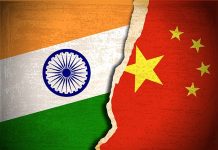This article is written by Shristi Roongta, from Amity Law School, Kolkata. This article states the dual circulation policy of China and its impact.
Table of Contents
Introduction
The President of China unveiled an idea in mid-May of last year that China will mainly rely on “internal circulation”. It is the domestic cycle of production, distribution, and consumption for development that is supported by innovation and upgrades in the economy.
What does China’s dual circulation strategy mean
China officially will search internally to tap the capability of its enormous domestic market and depend upon indigenous innovation to fuel growth. However, regardless of the expanded accentuation on the domestic market and the independence in certain areas. President Xi of China has repeatedly said that China would not shut totally off from the rest of the world and would rather open up additionally. Notwithstanding, a few concerns that China will take an inward-looking approach to its future self-reliance with opening up. In a communique issued after the completion of the fifth plenum towards the end of October that set out China’s monetary system going ahead, the dual circulation model was described to be a powerful domestic market to “comprehensively promote consumption and open a new room for investments”.
Why it was introduced
In early 2020, the strategy was promoted since the relation with the United States continued to deteriorate making the external environment less predictable for China. The change in the environment showed that it would be unsustainable for China to continue depending upon overseas demands for its big manufacturing apparatus running. Essentially it is a defensive approach by Beijing to prepare for the worst-case scenario since the world is undergoing significant geopolitical and economic changes.
The coronavirus pandemic exposed how the world was dependent on China for a critical supply of medicinal equipment with nations around the world promised to be more self-dependent on such products.
What does this policy mean for its domestic economy
The dual strategy of China involves tapping the huge domestic market of 1.4 billion consumers. They will try to increase the size of its middle class and also to narrow down the wealth gap so that domestic consumption will increase. It would also mean that China’s production system will be repositioned to focus on more demand at home rather than in a foreign country.
In September 2022, the Development Research Centre of China under the State Council, predicted that the nation’s per capita gross domestic product by 2024 would reach USD 14,000. The size of China’s economy would also exceed by 2032 that of the US with at least 560 million middle-income consumers. Beijing will also be pushing for technical self-dependence and having already provided incentives to build up domestic development and production of semiconductors. It would also produce cutting-edge technologies and could be strangled by Washington.
The former head of the Development Research Centre of the State Council, Wang Yiming said that China needs to enhance efficiency at home in order to survive technological containment measures by US-led western countries. He wrote in an article discussing China’s 2021-2025 that the main goal of this is to reduce the market distortion and allocate labour, land, and financial resources to higher levels of productive areas. He even mentioned that this would involve the free flow of labour as they would loosen up the hukou household registration system and also liberalize rural land management for the permission of allowing farmers to sell their land for construction and housing developments.
What will be China’s next steps under this policy
There are certain outcomes of this policy. That is to say in order to have a more sustainable long-term economic growth of China. Also, it is protected against the impact of external shocks that is the world’s second-largest economy which will focus on building an unblocked “internal circulation” of domestic production, distribution, and consumption instead of overly dependent on the “external circulation” of the global market.
To boost domestic demand
China is conducting a domestic reform wherein boosting private consumption for years and this has been ignited again by the impact of new external ripples in the global economy. There are key projects in this regard which include the faster reform of land residency of China which is also known as the hukou system and its ongoing urbanization program. This program would turn the migrant workers in million numbers into city dwellers. This would lead to the reduction of a key obstacle to building a highly consumer-driven economy. Also, involve materially tackling a yawning inequality gap on the local spending capacity by deepening the social safety net.
China is a “hyper-sized” consumer market with 1.4 billion people. However, its private consumption is lagging behind the production in between the unemployment and economic unpredictability due to the covid-19 pandemic. China’s 400 million middle class is steadily growing and offers remarkable market potential. Therefore under this trend, they expect growth in opportunities in areas such as health services, pension provisions, and also in upgrading and digitalization of supply chain networks and the e-commerce industries.
Strategic choke-point sectors
The other important element of this dual circulation policy will be “reducing risks tied to import dependency”. The tension with the US has uncovered the weakness of China’s supply chain. China depends on USD 300 billion worth of imported semiconductors to meet over 85 percent of its domestic market demand. Therefore all sectors, technology is self-possessed to receive the most undisguised support for achieving self-sufficiency with semiconductors or integrated circuits which gets the most attention.
How China’s policy will impact the foreign investment environment
Currently, the dual circulation policy of China is vaguely defined. Given its outsized part in the worldwide exchange, a minor move in China’s exchanging examples could evoke immense impacts. Therefore the foreign investors who engage in this market should keep up to date with the most recent development and assess the exposure to possible consequences. Until now, it is believed that China will see this time as a critical chance to deepen the market-oriented reforms. This would address the concerns on the allocation of production factors in the market such as land, labour, capital, and data. Further, it will gear up local producers to meet the growing demand for domestic and also to expand the industrial output for both domestic markets and exports.
For key areas attached to national safety such as technology, energy, and agricultural areas, the policymakers of China are expected to persuade more rapid foreign investment in high-end manufacturing and research and development besides the supporting enhancement of global supply chains.
The factors to be considered on one hand is China’s gigantic domestic market, its comprehensive supply chain network, and powerful business environment. On the other hand, increasing the cost of labour and an aging population, many foreign investors have adopted “in China, for China” and “China plus one” strategies to tap into the market growth of China and lowering the costs, diversifying the risks and accessing new markets. Even though some investors manage exposure to pressurise the home markets and the overwhelming problem in the short term. There are still large opportunities in China and Asia whose economies are the strongest in the world.
Criticisms of the policy
There are certain doubts whether China can shift its growth engine truly from state-led investment and exports to consumer spending without any painful reforms of its growth model and wealth distribution system. Many consumers in China have weak purchasing power. China’s sales of retail goods showed that often these goods are used as a gauge for goods and services on overall consumer spending. It shrank around 10 percent for the first seven months of 2020. However, the real decline in consumer spending could have been deeper as the retail sales figures include government spending at restaurants or shops. In September month, a critical increase in the sale of cars, beauty products, and jewellery helped the deals of merchandise grow by 0.9 percent in the third quarter thereby making the first-quarter increase this year. This contribution accelerated the nation’s overall economic growth rate of 4.9 percent in the third quarter. Even though the recovery in consumer spending of China remains weak and uneven because of the high-end consumption, raising questions about the extent of revenge spending.
Conclusion
It is expected from China to further articulate the strategy into particular policies but Beijing has laid out this vision that the jury is still out on whether it can be achieved. Therefore China may need to bring some changes into its national wealth distribution system which is tilted towards the stated area by design.
References
- https://www.google.co.in/amp/s/amp.scmp.com/economy/china-economy/article/3110184/what-chinas-dual-circulation-economic-strategy-and-why-it
- https://www.google.co.in/amp/s/mobile.reuters.com/article/amp/idUSKBN2600B5
- https://www.china-briefing.com/news/what-is-chinas-dual-circulation-strategy-and-why-should-foreign-investors-take-note/
LawSikho has created a telegram group for exchanging legal knowledge, referrals and various opportunities. You can click on this link and join:
 Serato DJ Crack 2025Serato DJ PRO Crack
Serato DJ Crack 2025Serato DJ PRO Crack











 Allow notifications
Allow notifications



